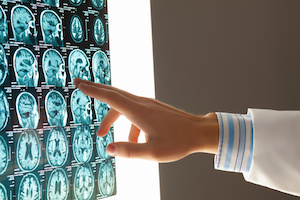Criminology research indicates that approximately 1/3 of people accused of crimes issue a false confession – a troubling statistic considering how valuable confessions are in criminal trials. Behavioral scientists have conducted years of research into the matter, and recently the Pennsylvania Supreme Court was called upon to decide on whether a social scientist expert witness could offer testimony regarding false confessions during a criminal trial. Unconvinced by social science research, the Court rejected behavioral expert testimony regarding false confessions, contradicting a similar opinion it issued the same day.
Pennsylvania Court Rejects False Confession Expert
In Commonwealth v Alicea, a divided Pennsylvania Supreme Court reversed a lower court decision that allowed a nationally renowned behavioral science expert to testify about false confessions during a criminal trial. Murder trial defendant Jose Alicea, accused of a 2005 killing, confessed to the crime after five hours of intense police interrogation. Lawyers for Mr. Alicea, whose IQ of 64 is well below the traditional threshold for intellectual disability, argued that expert testimony regarding the tendency for certain defendants to falsely incriminate themselves was critical to jurors’ analysis of their client’s confession.
Writing for the majority, Judge Seamus McCaffery was unconvinced that jurors needed a behavioral science expert witness to evaluate the legitimacy of confessions. Wishing to avoid a battle of experts arguing social science generalities, the court wrote, “Ultimately, we believe that the matter of whether a confession is false is best left to the jury’s common sense and life experience.” Cleary, Judge McCaffery and the rest of the 4 – 2 majority were unconvinced that the value of behavioral science research outweighed the potentially overwhelming use of social science experts during criminal trials – leaving dissenting judges with a strong counterargument.
Dissent Argues Value of Behavioral Science Expert Witnesses
Dissenting members of Pennsylvania’s high court took issue with the majority’s approach to social science research. Writing for the minority opinion, Judge Thomas Saylor criticized the majority’s “blanket exclusion of social science research based upon unanalyzed assumptions about juror capabilities, even as these assumptions are challenged by demonstrations of wrongful convictions and developing behavioral science.”
Judge Saylor’s argument is echoed by defense attorney organizations and social scientists who seek acceptance by the judiciary of established behavioral science research. It also represents a position the Pennsylvania Supreme Court was willing to accept in a related case – leaving the overall place for behavioral science expert witnesses in Pennsylvania criminal trials somewhat unclear.
Alicea Decision Contradicts Earlier Ruling on Use of Behavioral Science Experts
The Court’s decision in Alicea is somewhat puzzling considering that earlier in the day it accepted the use of behavioral science in Commonwealth v Walker – blogged about here. In Walker, the Pennsylvania Supreme Court accepted testimony by a behavioral science expert witness who explained to jurors the inaccuracies common across eyewitness testimony. Like Walker, the defendant in Alicea relied on expert testimony based on advances in social science to explain general patterns of human behavior that could influence a criminal investigation and trial, however, Pennsylvania’s Court was unwilling to broadly welcome behavioral science by accepting it in both cases.
While it is difficult to reconcile the two outcomes from Pennsylvania’s Supreme Court, the combination of Walker and Alicea are useful case studies of the integration of behavioral science expert witnesses into the legal system. Although it is clear by the dissent in Walker and the majority opinion in Alicea that some judges are unwilling to buy into the conclusions advanced by social science research, the partial acceptance in Walker is an encouraging step for behavioral science proponents. The expanding use of expert witnesses with behavioral science expertise will force more state courts to consider similar issues, and, while Pennsylvania may not offer a model of consistency, the Walker and Alicea decisions highlight the types of arguments judges will consider in future cases.













